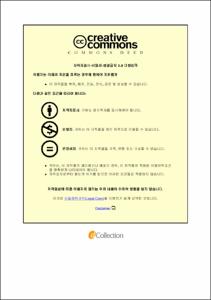고위험 임부의 태교실천, 자존감 및 사회적 지지가 태아애착에 미치는 영향
- Abstract
- Purpose
The current study aims to explore Taegyo practice, self-esteem, social support, and degree of maternal fetal attachment in women with high-risk pregnancy, the relationship between these variables, and the factors that affect maternal fetal attachment, as part of efforts to provide foundational data that can serve as a theoretical basis for future directions and development of a systematic and effective educational program for women with high-risk pregnancy.
Method
The participants included women with high-risk pregnancy receiving inpatient treatment at four hospitals—a general hospital and three women's hospitals—located in metropolitan city “B,” who were diagnosed with 19 conditions related to high-risk pregnancy. Subsequently, 226 women, who provided informed consent for participating in the study after understanding its purpose and aim, were included. Data were collected from February 1– 28, 2022. Data analysis was conducted with the SPSS/WIN 26.0 software. The general and obstetric characteristics of the participants were analyzed with frequency, percentage, average, and standard deviation. Taegyo practice, self-esteem, social support, and degree of maternal fetal attachment were analyzed with average and standard deviation.
Independent samples t-test and one-factor ANOVA were used for the differences in maternal fetal attachment due to general and obstetric characteristics, with the post-hoc Scheffé test. The relationship between the four variables were analyzed with the Pearson correlation coefficient, and the factors influencing maternal fetal attachment were analyzed using hierarchical multiple regression.
Result
There were statistically significant differences in the maternal fetal attachment of women with high-risk pregnancy owing to their general and obstetric characteristics, for the following factors: marital satisfaction (F=31.78, <.01), physical conditions (F=12.61, <.01), and whether the pregnancy was planned or unplanned (t=2.98, <.01). Maternal fetal attachment was positively correlated with Taegyo practice (r=0.70, <.01), self-esteem (r=0.53, <.01), social support (r=0.60, <.01), all with statistical significance. Taegyo practice (β=0.50, <.01) and social support (β=0.17, <.05) were considered as factors influencing the maternal fetal attachment of women with high-risk pregnancy, with Taegyo practice having the maximum influence between them. These influencing factors explained 53% of the total variation of outcomes, regarding the maternal fetal attachment of women with high-risk pregnancy.
Conclusion
The results of the current study indicate that maternal fetal attachment increases with higher Taegyo practice and greater social support. Based on these findings, it is imperative to use interventions that can promote Taegyo practice and enhance the social support of women with high-risk pregnancy, in order to increase the maternal fetal attachment of women with high-risk pregnancy.
- Issued Date
- 2022
- Awarded Date
- 2022. 8
- Type
- Dissertation
- Publisher
- 부경대학교
- Affiliation
- 부경대학교 대학원
- Department
- 대학원 간호학과
- Advisor
- 박은아
- Table Of Contents
- I . 서론 1
1. 연구의 필요성 1
2. 연구의 목적 5
3. 용어의 정의 6
II . 문헌고찰 8
1. 고위험 임부의 태아애착 8
2. 태아애착의 관련 요인 11
1) 태교실천 11
2) 자존감 12
3) 사회적 지지 13
III . 연구방법 15
1. 연구 설계 15
2. 연구 대상 16
3. 연구 도구 17
4. 자료수집 기간 및 방법 20
5. 윤리적 고려 21
6.자료 분석 방법 22
Ⅳ . 연구 결과 23
1. 고위험 임부의 일반적 특성 및 산과적 특성 23
2. 고위험 임부의 태교실천, 자존감, 사회적 지지와 태아애착의 정도 27
3. 고위험 임부의 일반적 특성 및 산과적 특성에 따른 태아애착 정도의 차이 28
4. 고위험 임부의 태교실천, 자존감, 사회적 지지 및 태아애착 간의 상관관계 30
5. 고위험 임부의 태아애착에 대한 영향요인 32
Ⅴ. 논의 34
Ⅵ. 결론 및 제언 40
References 41
부록 55
연구 설명문 및 동의서 55
연구 설문지 57
기관생명윤리위원회(IRB) 승인 결과 통지서 66
연구 도구 승인 67
논문 유사도 검사 결과 71
- Degree
- Master
- Files in This Item:
-
-
Download
 고위험 임부의 태교실천, 자존감 및 사회적 지지가 태아애착에 미치는 영향.pdf
기타 데이터 / 1.68 MB / Adobe PDF
고위험 임부의 태교실천, 자존감 및 사회적 지지가 태아애착에 미치는 영향.pdf
기타 데이터 / 1.68 MB / Adobe PDF
-
Items in Repository are protected by copyright, with all rights reserved, unless otherwise indicated.